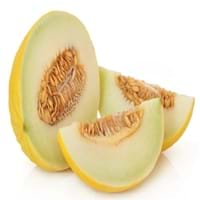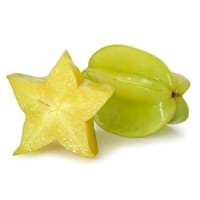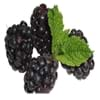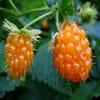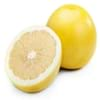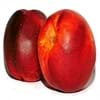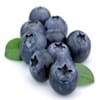Health Benefits
Body hydration, Cancer prevention, Gout treatment, Heart care, Treatment of skin Diseases
Cancer prevention, Heat stroke treatment
General Benefits
Body hydration, Controls blood pressure, Digestive aid, Eye care, Helps in weight loss, Improves eye vision, Maintains healthy cholesterol level, Strengthens bones
Anti oxidant properties, Anti-inflammatory properties, Digestive aid, Maintains healthy cholesterol level, Treatment of sore eyes
Skin Benefits
Anti-aging benefits, Brightens and lightens complexion, Hydrates skin, Reduces wrinkles, Treatment of dark spots
Anti-aging benefits, Heals sunburn, Skin rejuvenation
Hair Benefits
Prevents hair loss, Promotes longer and healthier hair, Protects hair
Promotes longer and healthier hair, Protects hair
Allergy Symptoms
Abdominal cramps, Breathing difficulty, Coughing, Diarrhea, Hives, Hoarseness, Itching in eyes, Itching of mouth, Itching sensation in throat, Nasal congestion, Nausea, Skin rash, Wheezing
NA
Side Effects
Allergic reaction
Nausea, Vomiting
Best Time to Eat
As a snack in the late afternoon, Don't consume at night and before bed, Eat the fresh ones, avoid mixing with any other foods, don't eat after meal., Morning time (before lunch)
As a snack in the late afternoon, Eat the fresh ones, avoid mixing with any other foods, don't eat after meal., Strictly avoid empty stomach
Vitamin B5 (Pantothenic Acid)
Vitamin C (Ascorbic Acid)
Vitamin K (Phyllochinone)
Calories in Fresh Fruit with Peel
Not Available
Calories in Fresh Fruit without Peel
Not Available
Calories in Frozen Form
Not Available
Calories in Canned Form
Not Available
Not Available
Calories in Jam
Not Available
Calories in Pie
Not Available
Season
All seasons
Autumn, Spring, Summer
Varieties
Green Flesh, Yellow Rind and Orange Flesh
King, Bell, Sri Kembangan, Arkin and Fwang Tung
Color
Green, Yellow
Golden yellow, Green
Inside Color
Light Green
Yellowish Green
Shape
Round
Oval and Star(Cross section)
Taste
Sweet
Crisp, Juicy, Sweet
Grows on
Not Available
Not Available
Soil Type
Sandy loam, Well-drained
Loam, Well-drained
Climatic Conditions
Warm
Moist, Warm to hot climate
Facts about
- The average weight of honeydew melon is 6 pounds.
- 90% of a honeydew is water.
- In middle east countries, dried and roasted honeydew seeds are consumed as snacks.
- Honeydew melons can be 15-22 mm long.
- When carambola is cut horizontally, it forms a star.
- It is believed that carambola helps to cure hangover.
- Entire carambola is edible, including its skin.
- 2 varieties of carambola are cultivated: tart & sweet.
Top Producer
China
Taiwan
Other Countries
Brazil, Egypt, India, Iran, Mexico, Morocco, Spain, Turkey, United States of America
Australia, Guyana, India, Israel, Malaysia, Philippines, United States of America
Top Importer
Not Available
Europe
Top Exporter
Not Available
Malaysia
Botanical Name
Cucumis melo
Averrhoa carambola
Synonym
Not Available
Not Available
Subkingdom
Tracheobionta
Tracheobionta
Division
Magnoliophyta
Magnoliophyta
Class
Magnoliopsida
Magnoliopsida
Subclass
Dillenhidae
Rosidae
Order
Cucurbitales
Oxalidales
Family
Cucurbitaceae
Oxalidaceae
Species
C. melo
A. carambola
Generic Group
Gourd
Not Available
Difference Between Honeydew and Carambola
We might think that Honeydew and Carambola are similar with respect to nutritional value and health benefits. But the nutrient content of both fruits is different. Honeydew and Carambola Facts such as their taste, shape, color, and size are also distinct. The difference between Honeydew and Carambola is explained here.
The amount of calories in 100 gm of fresh Honeydew and Carambola with peel is Not Available and 31.00 kcal and the amount of calories without peel is 36.00 kcal and Not Available respectively. Thus, Honeydew and Carambola belong to Low Calorie Fruits and Low Calorie Fruits category.These fruits might or might not differ with respect to their scientific classification. The order of Honeydew and Carambola is Cucurbitales and Oxalidales respectively. Honeydew belongs to Cucurbitaceae family and Carambola belongs to Oxalidaceae family. Honeydew belongs to Cucumis genus of C. melo species and Carambola belongs to Averrhoa genus of A. carambola species. Beings plants, both fruits belong to Plantae Kingdom.
